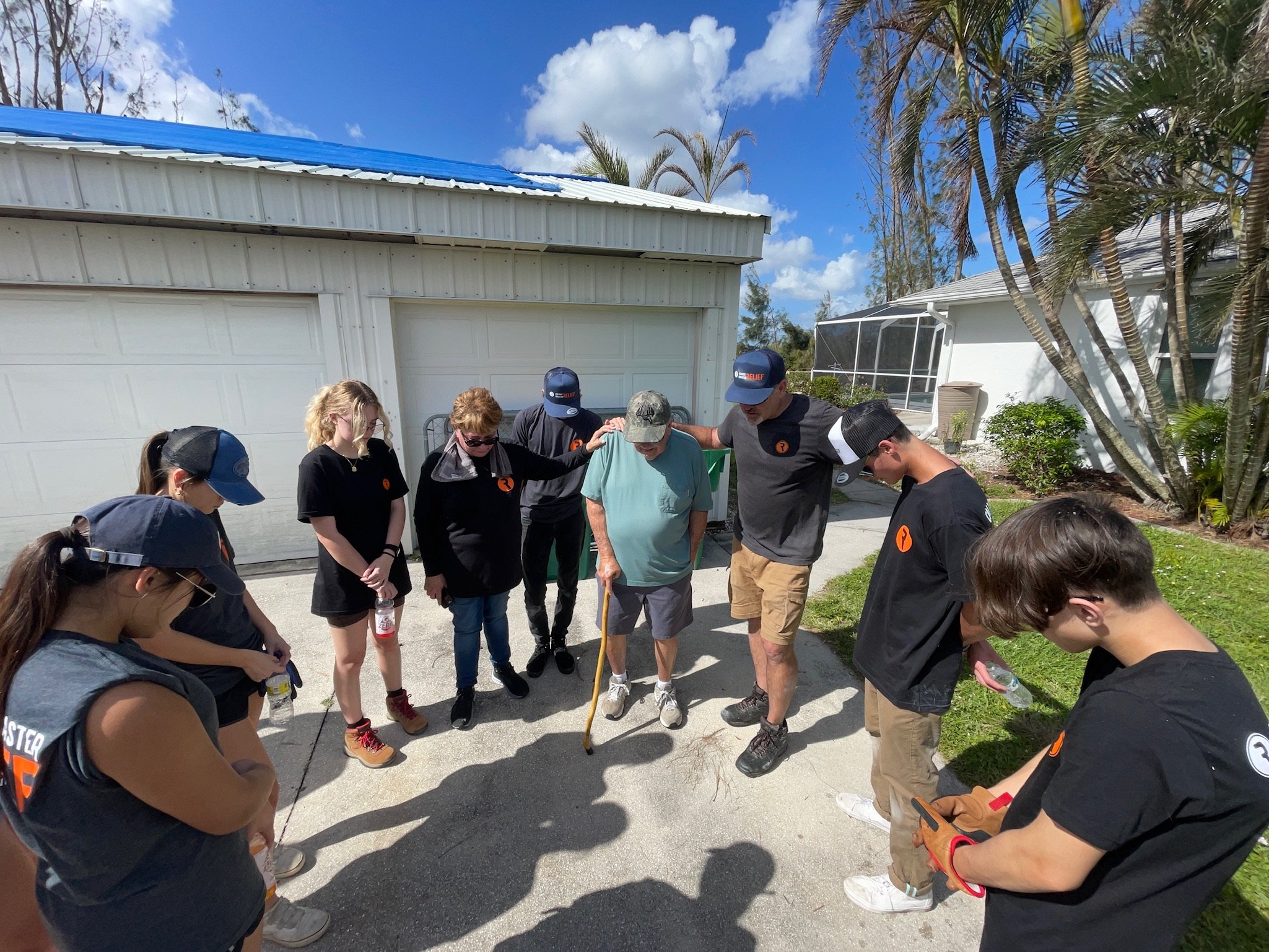
Send a Team
Training and preparation:
Disaster Assessment:
Before one can truly assist after a disaster, the situation must be evaluated. Assessment helps with setting priorities in order to best be of aid to those who are suffering after a disaster. Disasters take on many forms, so there is not a set pattern of response. This course provides a hands-on understanding of the assessment process and offers guidance to develop your strategy when entering any disaster situation.
Relief team preparation:
Teams can be exposed to a variety of dangers, including mold, raw sewage, contaminated water, infectious disease, toxic or hazardous substances, reptiles and dangerous work sites. Teams should be trained to follow safe practices to ensure that one disaster does not follow another. To help protect relief workers, and the church that sent the workers, consider the following.
Before you go:
Consult a Relief Organization. Churches should coordinate their relief efforts with agencies and organizations experienced in relief work. Consider aligning your church with a sponsoring disaster relief organization that will provide structure at the destination site, rather than attempting to do it on your own.
Select your team carefully. The relief team may face a challenging environment and physically demanding work. For those reasons, use caution in selecting the relief team members to include only those whose physical and mental health is compatible with the rigors of the work they will be performing. Discuss the physical requirements for the work that is anticipated with the sponsoring disaster relief organization.
Obtain health clearance and immunizations. Relief workers should receive medical clearance from their doctors in order to participate. Ideally, workers should be assessed at least four to six weeks before travel so that any necessary vaccinations, such as tetanus/diphtheria and/or the hepatitis B series can be given.
Receive training and education. Learn from the sponsoring relief organization about the type of work the relief team will be participating in and find out what pre-trip training opportunities are available. Research the weather at the relief site to assist your team in knowing what clothes to pack. Keep up-to-date on the general situation at the relief site through media and Web sources.
Coordinate food, water, lodging, and transportation. Clean water and food can be in short supply following a natural disaster. Talk to your sponsoring disaster relief organization to ensure that there will be a sufficient supply of clean water and food during your trip. Likewise, determine in advance what the lodging and sleeping arrangements will be. Finally, make appropriate arrangements for transportation of the relief team.
Understand equipment and tool needs and us. Discuss with your sponsoring disaster relief organization the equipment and tools that will be made available to your team and those that you are requested to bring along. Make sure that all team members receive proper training on the use of equipment and tools, especially power equipment.
Check insurance. Discuss the coverage afforded by your church’s current policy for the volunteer and employee members of the relief team with your insurance agent. This is particularly important if your relief efforts involve international travel. Consider supplemental liability, property, and/or workers’ compensation coverage for your team, if necessary.
Consider releases. The members of your disaster relief team should know that, despite precautions, there are risks inherent in disaster relief activities. Given their assumption of these risks, ask team members to release the church from liability for any injury or damage that may occur to them while participating. Likewise, have a list of emergency contacts for each team member; and consider requesting a consent for emergency medical treatment in the release document. Those forms are available on our site:
When your team arrives:
Complete orientation and training. Once the team has arrived at its destination, they should receive orientation about the project from the sponsoring disaster relief organization. They also should receive training on the specifics of their work, the work site, equipment, tools and safety procedures. Proper orientation and training are crucial to the team’s safety and to the effectiveness of their work.
Use personal protective equipment. For general cleanup work, proper clothing, goggles, ear plugs, heavy work gloves and proper foot ware. Additional protection is required if working in buildings with mold contamination.
Protect against mold exposure. Exposure to mold can lead to serious respiratory and health complications. Assume that mold is present in all water-damaged buildings and take the risk of mold exposure seriously. At a minimum, be sure that all workers have skin, eye and respiratory protection. The use of full-face air purifying respirators, long gloves that extend to the middle of the forearm, and disposable clothing, such as a Tyvek body suit are recommended.
Follow safe practices. Team leaders should make sure that safe practices are followed during the relief effort, such as avoiding downed power lines, using teams of two or more people to lift heavy or bulky objects, making sure only trained people use power equipment, utilizing proper protective equipment and not overtaxing team members’ physical capabilities.
Prevent heat-related illness. Take frequent breaks, drink plenty of clean water and other liquids, stay indoors or in shaded areas, and wear light-colored, loose-fitting clothing.
Keep opposite sexes separate. Relief teams are commonly made up of a mix of married and single persons of both genders. Establish clear boundaries and separate sleeping quarters for men and women.
Wash hands often. Waterless alcohol-based hand sanitizer may be used when soap is not available and hands are not visibly soiled.
Practice First Aid. Make sure there is a First-Aide Kit available on sight. Clean all open wounds and cuts with soap and clean water. Apply an antibiotic ointment. Know where the nearest Emergency Facility or Hospital is located.
Follow security measures. Discuss with your sponsoring disaster relief organization the security of the work site and the surrounding neighborhood. Follow their recommendations on security, as well as any information provided by local law enforcement. Obey any curfews that have been imposed by local authorities. Emphasize the importance of staying with the group and not wandering off.
After you return:
Consider medical evaluations. Those team members returning home ill or injured should seek evaluation and treatment from a healthcare professional. Similarly, relief team members who experience fever, rash, respiratory illness, diarrhea/intestinal upset, or other unexplained symptoms in close proximity to the trip should seek care from a medical provider.
DEBRIEF YOUR TEAM. Depending on what your team has experienced and witnessed, it is always good to meet and share individual experiences from the relief effort. Also it is helpful for future church relief efforts to evaluate the teams performance and to talk about changes or needs for future relief efforts.
SHARE YOUR EXPERIENCE WITH YOUR CHURCH. It is a good idea to designate one of your team to chronicle your trip with pictures and video to share with the church on your return. Also to produce a presentation that can be used in the future for organizing teams for other relief opportunities.



